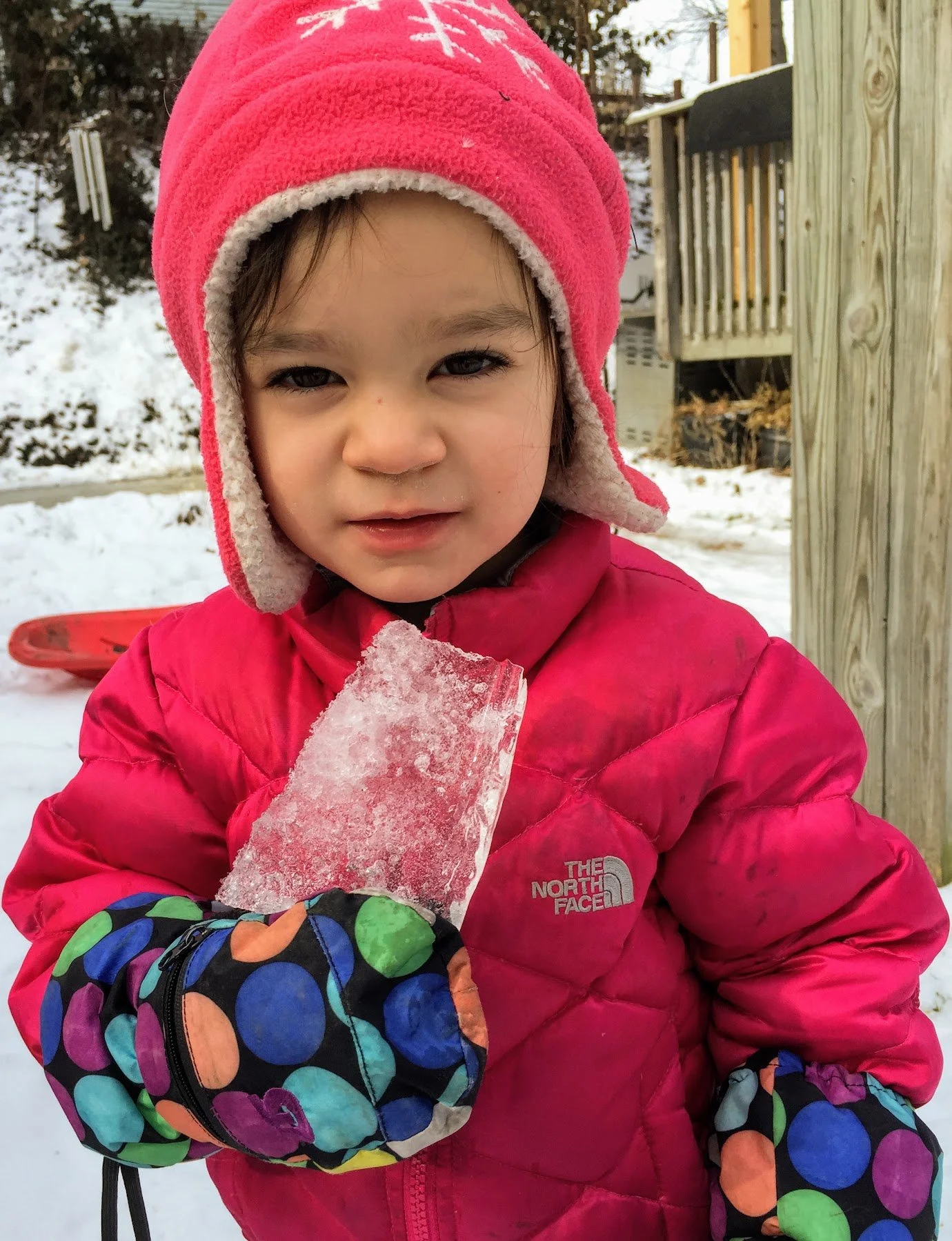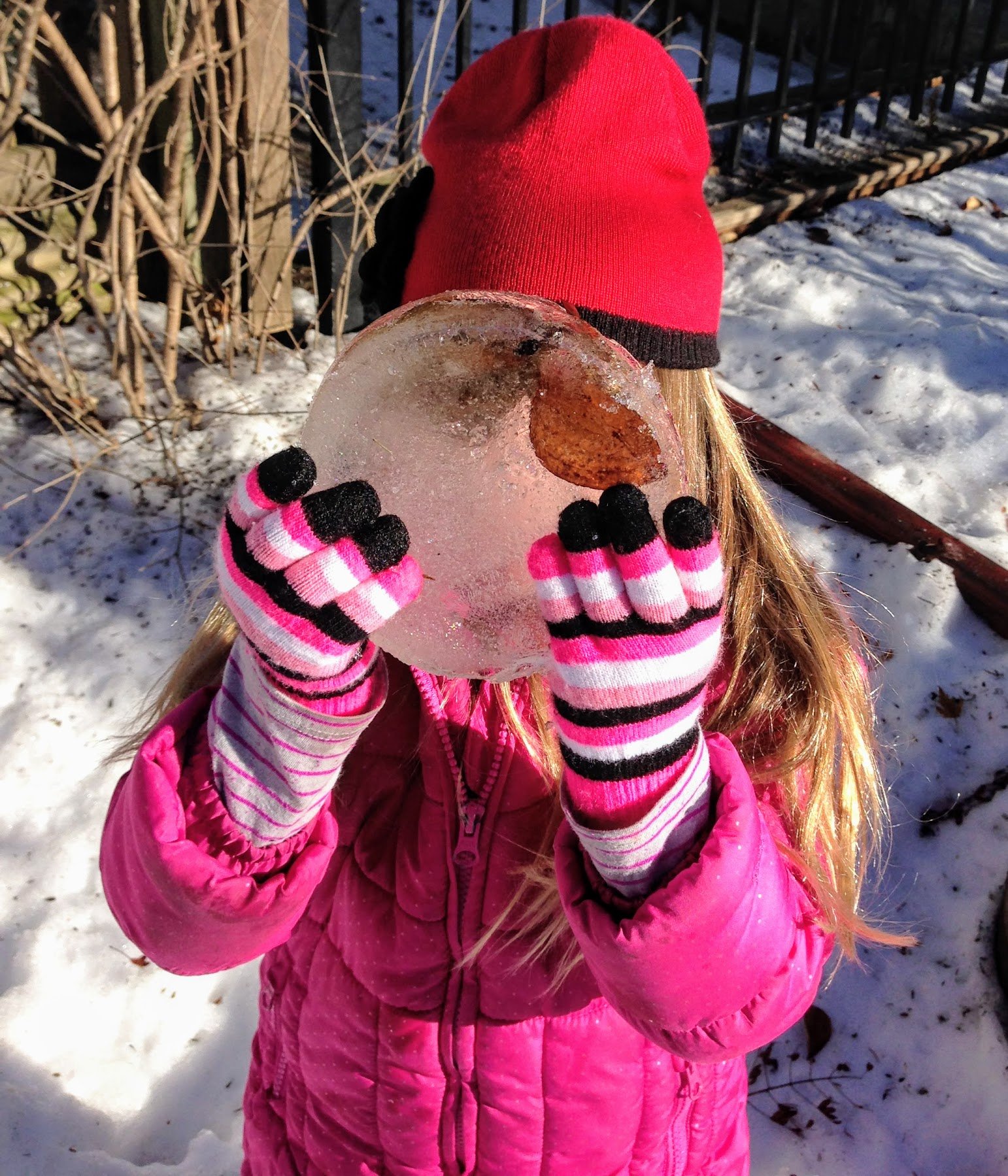Brrr, It’s Cold Outside
“LOOK! We have icicles!”
"Can I have one? I need one!"
On this brisk winter morning—much to the children's delight—nature has given us the gift of icicles. The children's fascination with these frozen treasures leads to an abundance of "teachable moments" as we engage in some STEM learning while getting some fresh air and exercise.
Soon we are counting, sorting and measuring the icicles. I can practically see those little brain synapses firing as the children use their senses to investigate the properties of the icicles and revel in the joy of being able to choose, hold and taste their STEM lesson for the day.
"My icicle is longer than yours!"
"I like the little icicles! They fit in my mouth better!"
"I like the thick ones, they last a long time! Look how fat mine is!"
When I hear my students discussing size, comparing attributes and sharing their math vocabulary with their friends, my heart just soars. Mathematical language is one of the strongest predictors of children's early mathematical success. Whenever children discuss relative concepts, they are doing math!
"Aww! I dropped mine and now it is in little pieces!" Janelle wails, holding back tears.
"They still taste good! Now you just have lots of icicles!" says the ever-optimistic Claire. "Before you had one, but now you have more! You have 1, 2, 3, 4, 5! You have five icicles!”
Claire touches each icicle as she counts. The ability to count in sequence and use one-to-one correspondence to determine the number in a set is known as rational counting.
Janelle has the ability to rote count, reciting the sequence in the correct order without an understanding of one-to-one correspondence or the concept of cardinality (the number of elements in a set). "I do have five!" she shouts.
"Look, I can drop mine and it doesn’t break!" yells Owen as he drops the thickest icicle to the sidewalk, only to have a few pieces chip away.
It is difficult to ask children to compare quantities if they don't know what "more" or "less" means. If they can understand "before" and "after," they are more likely to know, or be able to understand, what number comes after four. When children learn this language in a math context, they are ready to move on to more advanced mathematical concepts. We are building our math foundation!
"How did you make these icicles? We don’t have them at my house," asks Rowan as she chomps on her icicle.
"I know!" chirps Robyn. "When the sun warms up the snow on the roof it melts and turns the snow into water and the water starts dripping and then it gets cold again and makes an icicle! "
We take a long look at the ice melting off of the neighborhood roofs and other inclines and see that the dripping has indeed created icicles. We discuss how warm temperatures melt the snow and that is why our clothes often get wet, even when the snow is frozen solid on the ground. Now we have science! I love it when our play leads us right down the path to new STEM experiences and investigations.
“Oh, when our hands are warm in our mittens, it melts the snow? I never knew that!” Logan has processed the information in a way that many of his younger friends don’t have the brain development to do. He seems quite astounded by this realization. Together, we hypothesize which icicles will melt faster or whose icicle will get eaten faster.
Then we swap out our wet mittens for dry ones and hunt for more ice to expand our STEM vocabulary.
Discussions about the weather are often rote and meaningless in early childhood classrooms. Classroom activities that involve calendars and weather patterns can be boring for young children because they are removed from the actual seasons and weather events.
But bringing the children outside to experience the weather firsthand or bringing the snow inside to be investigated on a water table is interesting. Involving the children in hands-on investigations is a much better way to teach concepts such as "winter" or "cold" than directing a child to walk over to a window and report that "It is snowing outside."
During this busy holiday season, give yourself and your students a chance to escape the heated classroom and venture into the great outdoors to breathe in some fresh air and find your curriculum in the natural world.
I promise you that this approach will lead to far more STEM learning than talking about the weather during circle time!


